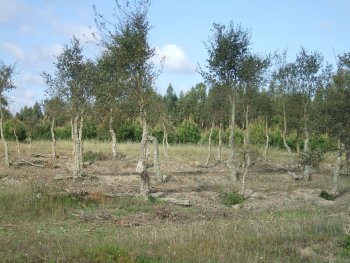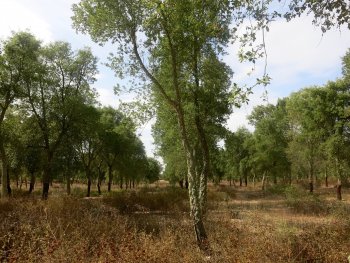The influence of formation pruning in the cork tree growth rate: a case study.
The formation pruning is an operation usually defined in forest management plans established for cork oak stands plantations. It aims at removing tree branches, usually the lower ones, therefore promoting the development of a long-straight stem, at least up to the expected future debarking height. This will later on facilitate cork harvesting operations.
It is unclear if the pruning intensity affects the tree growth. This factsheet shows the results of a case study where tree growth was compared between trees not pruned, and trees subject to two pruning intensities.


